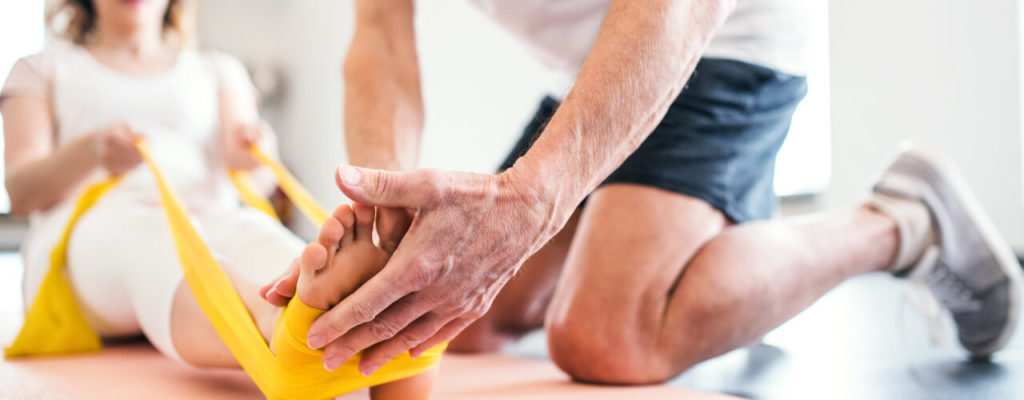Did You Know Physical Therapy Could Provide You With the Relief You Need?
Do you take opioids to manage your pain? Well, you’re not alone. Health care providers in the US write over 200 million prescriptions for opioid pain medication every year.
The Center for Disease Control and Prevention has even issued guidelines about this and urged safe non-drug alternatives, such as physical therapy.
A recent study published in Health Services Research found that people who saw a physical therapist prior to other treatments were 89% in less need of an opioid prescription.
Before you take another pill for your pain, call our office to schedule an appointment with a physical therapist. We want you to know that relief from arthritis pain is possible with the help of physical therapy.
Physical therapy can help you govern your pain without drugs, giving you a chance to break away from your reliance on opioids.
If you’re suffering from pain, be sure to call us to schedule an appointment with one of our physical therapists.
Opioids – what are they and why are they dangerous?
Opioids are strong pain-killing drugs that are often prescribed to combat severe chronic pain. They are traditionally derived from substances in the poppy plant.
Prescription opioids are painkillers often prescribed to block pain signals and prescribed to treat moderate to severe pain. These drugs can also be addictive.
Opioids such as morphine, codeine, hydrocodone, and oxycodone can often deaden the pain when milder drugs cannot, making them a common prescription for cancer pain, acute injuries, and severe neurological or musculoskeletal pain. They can also produce euphoria or unconsciousness, making them a highly-abused substance in both legal and illegal forms (such as heroin).
Opioids work by binding to opioid receptors in the brain and other structures of the body. As the opioids occupy these receptors, they prevent the receptors from receiving pain signals. At the same time, the opioids trigger the release of large amounts of dopamine, a substance that evokes feelings of pleasure.
Regular usage can increase your dependence and make you need higher and more frequent doses. Opioids can restrict your ability to breathe and can lead to a fatal overdose.
Opioids are not in the same category as over-the-counter drugs like Tylenol and aspirin. The most common ones prescribed are Oxycontin and Vicodin.
Are you experiencing these symptoms?
Opioid use disorder is a medical condition used when one is not able to not stop taking opioids.
When one is physically dependent on opioids, they typically have withdrawal symptoms like sweating and cravings.
Other signs include drowsiness, weight loss, change in sleep habits, flu-like symptoms, changes in exercise habits, and isolation.
How can physical therapy decrease the need for opioid use?
According to a study published in JAMA, most people see a physical therapist for musculoskeletal conditions that result in back, neck, knee, and shoulder pain.
Researchers found that when a person saw a physical therapist, they were less likely to be prescribed opioids. “This study provides early evidence that the CDC guidelines may help decrease long-term opioid use,” said Steven George, PT, Ph.D., one of the study’s contributing researchers. “The biggest takeaway is that early physical therapy may be a viable option for several musculoskeletal conditions, especially if preventing long-term opioid use is a treatment goal.”
You should consider physical therapy if:
- You’re experiencing issues such as addiction, depression, or physical side effects from opioid usage – or you’re determined to avoid such issues
- You suffer from a chronic, incurable pain condition that might otherwise require a lifetime on opioids
- Your pain is musculoskeletal or neuromuscular in origin (as opposed to cancer pain, for instance)
- You’re interested in actually treating the underlying cause of the pain, instead of simply numbing the pain itself
A physical therapist is a healthcare movement expert who helps patients decrease their pain and increase their quality of life through specific exercises, hands-on care, and education.
A physical therapist does a complete evaluation of the patient and develops an individualized treatment targeted to the root cause of pain. Patients experience pain relief, increased mobility, and regain the ability to perform daily tasks.
There’s a lot involved in a physical therapy treatment plan. It often includes both active and passive modalities. Active modalities may include targeted exercises and stretching.
Passive modalities typically include ice and heat therapy, electric stimulation, ultrasound, massage therapy, and stabilization methods.
Ready to say goodbye to opioids?
If you’re suffering in pain, stay away from opioid prescriptions. The risks outweigh the rewards. Instead, see a physical therapist.
Be sure to give Dynamic Physical Therapy a call to schedule a one-on-one consultation and evaluation.
Our physical therapists are certified and experienced. They’ve helped many others and can help you, too.
Tags: Natural Pain Relief, Natural Treatment, Physical Activity, physical therapy, Nutrition, aches and pains, chronic pain, Physical Health, physical therapists, opioids



